 | Name: Joanne Pinfield
Overview: Joanne Pinfield was only 5 when she had the frightening experience of waking from a coma in hospital and she has found diabetes frightening for much of her life. At school she felt isolated by being the only person with diabetes. She left at 16 to work in a pottery with a sympathetic boss who helped her not to feel ashamed of diabetes, but then reverted to hiding her condition during 12 years working in a factory. Her father`s death in 2001 prompted her to take better care of herself. She married in 2002 and runs a limousine business with her husband.
There are also interviews with Joanne`s mother, Mary Potter, and husband, Nick Pinfield.
Hits=12 |
|
| 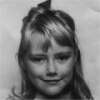 | Name: Clare
Overview: Clare was brought up in a remote Cornish hamlet. Although she developed Type 1 diabetes around the age of 5, she was not given insulin until about 4 years later and was instead kept on a near-starvation diet. She rebelled for many years and only began to take care of herself after she was registered blind in 1984. She went on to gain a second BA, MA and PhD and is now a university research fellow. She has been helped by coming to regard her lack of sight as `an issue around social equality as opposed to a medical issue`.
Hits=8 |
|
| 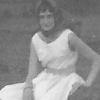 | Name: Isobel
Overview: Isobel was brought up in a small English market town. She moved to a large city in the 1960s where she met and married her husband, two years after he`d arrived in England from Pakistan. Both their families were anxious about the relationship at first, but they found much in common between her Methodist and his Muslim values and ate a mixture of English and Asian food. They were happy until the late 1990s, when he began to develop many of the complications associated with Type 2 diabetes. His loss of mobility made him depressed until he died in 2006. This interview is in written form only.
Hits=7 |
|
|  | Name: Kushira Hackett
Overview: Kushira Hackett`s mother was white and her father black – from Guyana. Her parents split up when she was 5 and her mother later married a Jamaican. After diagnosis, the hospital staff explained to her mother about portions and gave her scales for weighing food, but gave no explanations to Kushira. Her mother also gave no explanations, and she thinks this led to her rebellion against diabetes, and to her leaving home aged 16. She had a period of homelessness, but later gained a law degree and now lives happily in Birmingham with her partner and two children.
Hits=6 |
|
|
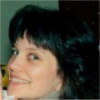 | Name: Julia
Overview: Julia was the first member of her family to go to university, and she taught in a primary school before specialising in teaching dance. Between her diagnosis in 1989 and the recording of this interview in 2004, she spent time in hospital for a variety of reasons, including the births of her three daughters. The biggest changes she noticed during these years were the increasing role of specialist nurses and also a shift to patient control: at first she was automatically put on a drip, whereas later the staff began to trust her to manage her own diabetes.
Hits=4 |
|
| 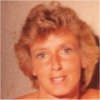 | Name: Shirley Jones
Overview: Shirley Jones` parents had little money to spend on food and she remembers eating bread and jam `many, many times`. She married at 19, divorced, married again at 21, and then her second husband left her to bring up two small children alone before she was diagnosed with diabetes, aged 32. She was recruited into the UK Prospective trial for Type 2 diabetes, but rapidly became insulin-dependent. Until recently, she ran a pub with her current partner. She is now on kidney dialysis.
Hits=4 |
|
|
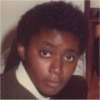 | Name: Patsy
Overview: Patsy is one of ten children. Her parents emigrated from Jamaica in the 1950s. Her mother worked as an auxiliary nurse and her father as a builder. After diagnosis, she resented having to weigh portions of carbohydrate, while her family could eat what they liked. She still calculates the weight of food. The question `Why me?` has persisted throughout her life. She feels that everything possible has gone wrong with her health and she is now on haemodialysis. But her love for her young son keeps her going and, despite poor health, she`s determined to spend time with him.
Hits=3 |
|
|  | Name: Gillian
Overview: Gillian was diagnosed when she was 23, while working as a
journalist in London. At the age of 26, a consultant advised her that if she
wanted children, it would be a good idea to have them soon, because "you`ve
got to consider whether you`re going to see them grow up". Her partner
didn`t want to be a father at that stage, so she decided to be a single
parent and has brought up two children on her own. Her daughter was
diagnosed with diabetes in 1999.
There is also an interview with Gillian`s son, Tom.
Hits=3 |
|
|
 | Name: Mushtaq
Overview: Mushtaq was in business until he gave up work, aged thirty, to look after his parents full-time. Both parents had Type 2 diabetes and they had managed well, until his mother developed Alzheimers and his father manic depression. He finds that mental illnesses and diabetes affect each other greatly, but he has difficulty in persuading specialists in these fields to consult each other. He earns far less than he did in business and does it for love, but wishes that the government could pay a little more, in recognition of how much money is saved by family members` full-time care.
There is also an interview with Mushtaq`s sister, Shanaz.
Hits=3 |
|
| 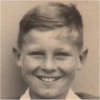 | Name: Ian Vokins
Overview: Ian Vokins was diagnosed shortly after leaving junior school and when he joined his secondary modern school, he was treated `like an alien` and fed dried apricots at every school dinner for 3 years! He was bullied throughout his school-days and left as soon as he could, aged 15. After that, life `seemed to open up` and he `started learning` while he worked as a technician in fields as diverse as atomic energy, cryogenics, orthotics, packaging, and space science. His work often took him abroad, and he says that diabetes hasn`t stopped him doing anything, apart from flying aeroplanes!
Hits=3 |
|
|
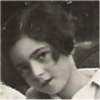 | Name: Erika Harding
Overview: Erika Harding`s father was Jewish and, in 1939, after the Nazis invaded Austria, she came by boat to England. When she looks at her photo of the thin, hollow-eyed little girl on the boat, she`s sure that she already had diabetes. After diagnosis, she was treated at King`s College Hospital, London, by R.D. Lawrence (co-founder of the British Diabetes Association, now Diabetes UK). She left grammar school at 18 and worked as a medical laboratory scientist until she retired. She and her artist husband have both played in many chamber music ensembles.
Hits=2 |
|
| 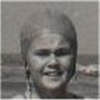 | Name: Victoria
Overview: Victoria`s father was a bank manager and she attended a private school and a grammar school. At 16, she developed an eating disorder after a boyfriend dropped her because she was diabetic, and at 25 she briefly rebelled against her diabetic diet. Otherwise, she feels diabetes has caused few problems and hasn`t prevented her from achieving her ambition of becoming a teacher. She thinks perhaps it did influence her not to have children, but she enjoys life with her partner, and is grateful for new blood testing equipment and other developments which have given diabetics greater freedom.
Hits=2 |
|
|
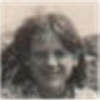 | Name: Mary
Overview: Mary`s father was a baker and her mother a factory worker. When she was diagnosed, the hospital suggested that they should buy a book on diabetes by R.D. Lawrence, but she doesn`t think they read it. She feels she was given very little information, and remembers thinking that her diabetes might disappear when she began to have periods at 15. She made little effort to control her diabetes until she went to a clinic in Oxford in 1983. She works as a podiatrist and reckons that about 75% of her patients have diabetes
Hits=2 |
|
|  | Name: Emma Cherry
Overview: By the time Emma Cherry was diagnosed in 1988, GPs were familiar with childhood diabetes; hospital children`s wards were used to dealing with it, and Emma remembers a wonderful diabetes specialist nurse who showed her how to inject herself, and later called at her home twice daily to supervise her early attempts. Her schools, university, and colleagues at work all accepted her without any fuss, and she has never been made to feel `different`. Injections and blood tests are such a routine part of her life that she wonders how she would cope with a cure!
There is also an interview with Emma`s mother, Zin Cherry.
Hits=2 |
|
|
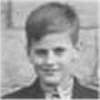 | Name: Peter
Overview: Peter`s father was a professor and both parents were well-informed about diabetes after his older brother was diagnosed in 1945. They spotted Peter`s symptoms early and at first he only needed four units of Lente insulin to last 24 hours. He was educated at Oxford and worked in the steel industry for several years. He is now a management consultant and has few problems associated with diabetes. He has recently remarried, after being widowed in 2003, and has a daughter with diabetes who is `much more able to cope with disturbances to her daily routine than I am`.
Hits=2 |
|
|  | Name: Peter Swift
Overview: Dr Peter Swift was Consultant Paediatrician at Leicester Royal Infirmary from 1979 to 2006. He has published widely on childhood diabetes and produced guidelines for the International Society for Paediatric and Adolescent Diabetes. In a national survey of paediatric diabetes services in 1988, he found many children were not being seen in specialist clinics; few clinics were using HbA1c tests, and they lacked specialist nurses, dietitians and psychological help. By 2004, almost all children were seen in specialist clinics, with more specialist nurses. He still thinks more specialist nurses and dietitians are needed and many more mental health workers.
Hits=2 |
|
|
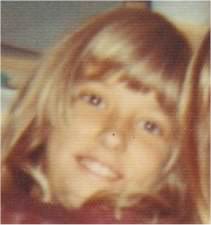 | Name: Rachel
Overview: In 1996, Rachel volunteered to work on a diabetes helpline, because she felt she`d learnt so much about diabetes from her family. Her older brother, Tom, and younger sister, Anna, were both diagnosed in their teens. Her parents were less traumatised by the second diagnosis and Rachel wonders if this explains the different ways in which her siblings have managed their diabetes. She has also observed how her brother has handled his own son`s diabetes; how a close friend coped with her child`s diagnosis; and how her mother-in-law struggled with Type 2 diabetes in her later years.
Hits=2 |
|
| 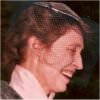 | Name: Beryl Smith
Overview: Beryl Smith first met children with diabetes when she was a student nurse and junior staff nurse at Birmingham Children`s Hospital from 1953 to 1957. She gave up nursing after she got married and didn`t encounter diabetes again until her own daughter, Catherine, was diagnosed in 1964, at the age of five. Catherine had so-called ‘brittle` diabetes, with frequent hypos – until she received two islet transplants in 2006/7. Beryl`s husband, David, developed Type 2 diabetes in 1983. At first he was on tablets, but was able to manage on diet alone after he lost four and a half stone.
Hits=2 |
|
|
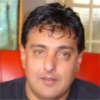 | Name: Mr. Baghria
Overview: Mr. Baghria`s parents are Sikhs who came from India in the 1950s; his father worked as a galvaniser in a factory. His parents` aim was that he should have a good education, but his own dream was to become a truck driver. He married young and he and his wife saved to buy his HGV licence. Not long afterwards, he was diagnosed with diabetes and his licence was revoked. He appealed and managed to get it back, on condition that he had a yearly medical - and he has been driving all over Europe ever since.
Hits=1 |
|
| 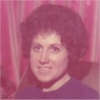 | Name: Shirley
Overview: Shirley left school at 16 and worked for the Inland Revenue until retirement. When she was diagnosed, her mother was very ashamed. Shirley looked after her parents until they died and then lived alone. She has had to cope alone with severe hypos, but says that living alone makes it easier to keep to a strict diet. She feels that her diet has made her healthier than she would have been if she hadn`t had diabetes. She has a low opinion of doctors, apart from a few consultants, but likes the group meetings held nowadays by specialist nurses.
Hits=1 |
|
|
 | Name: John Browning
Overview: John Browning`s father was an army officer and John always assumed that he would make his own career in the forces. He was diagnosed with diabetes at the age of 28, not long after getting married, and was invalided out of the army. He became a Conservative party agent and then a teacher. He still weighs his food and attributes his good health to his strict regime. He thinks one of the main improvements in his care has been to see the same specialist at each visit, instead of a different person every time.
Hits=1 |
|
| 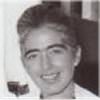 | Name: Judith Steel
Overview: Judith Steel worked part time throughout her career. In 1972 she founded the Kenya Diabetic Association and in 1976 she began `probably the first pre-pregnancy clinic that was started anywhere` for women with diabetes, at Edinburgh Royal Infirmary. She was Associate Specialist at the Infirmary from 1983 to 1994 and at Victoria hospital, Kirkcaldy from 1994 to 2004. She has published widely on diabetes and lectured to medical students at the Universities of Edinburgh and St. Andrew`s. She has also held office in several national organisations and in 1992 was awarded an MBE for Service to Diabetes
Hits=1 |
|
|
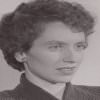 | Name: Barbara Boucher
Overview: In 1970, Barbara Boucher became Consultant Physician at The London Hospital, at a time when female consultants were rare, and she worked there until 1998. She was also Senior Lecturer at Queen Mary, University of London, from 1970 to 1999. She has undertaken research on many aspects of diabetes and on improving diabetes care, especially for pregnant women. Through her work in the East End of London, she has raised awareness about causes of diabetes amongst Asian people in Britain. She has found links between vitamin D deficiency and Type 2 diabetes, and identified Betel-nut chewing as a risk factor.
Hits=1 |
|
| 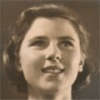 | Name: Margaret Williamson
Overview: Margaret Williamson was brought up in a village in North Yorkshire, the only daughter of an industrial chemist. Her mother was diagnosed with diabetes when Margaret was aged 2, and put on a diet of no carbohydrate with high quantities of insulin. When Margaret was diagnosed, a Newcastle consultant, James Spence, put mother and daughter on a more modern regime of high carbohydrate, which was weighed at each meal. After school, she went to business college in London, and worked as a secretary for directors of scientific institutions. She married a Cambridge research scientist and had two children.
Hits=1 |
|
|
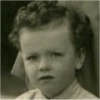 | Name: Simon Lawson
Overview: Simon Lawson`s father was 65 when he was born and his mother 44, and both died while he was in his teens. His unhappiness affected his public school education and he failed to get a place at Cambridge. Instead he worked at Sotheby`s in London and it was only after he married in 1971 that he obtained a degree and a doctorate – leading to his present work as an Oxford University librarian. He has warm memories of being treated by two eminent consultants – RD Lawrence and John Nabarro – and has always enjoyed knowing as much as possible about diabetes.
Hits=1 |
|
| 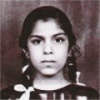 | Name: Bena
Overview: Bena was born in the Kigezi District of Uganda, the daughter of a wealthy businessman. She was diagnosed when nearly 12 and then shunned by children who thought diabetes was contagious. She lived on chapattis and spinach and a bitter vegetable juice thought to cure diabetes. When Idi Amin expelled Ugandan Asians in 1972, her family came to England, and she was delighted to be allowed to eat a wider range of food. She eventually married an Englishman and had two daughters. She works as an office administrator, in a social services department that supports disabled children.
There are also interviews with Bena`s daughter, Emma and her husband, Terry.
Hits=1 |
|
|
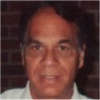 | Name: Tas Bokhari
Overview: Tas Bokhari`s parents were wealthy landowners in India. As Muslims, they were forced to migrate to Pakistan in 1947 and many of his family were killed on the way. He was educated in a mission school and a college before moving to England in 1961. He married an English librarian in 1964 and has two children. After acquiring an HNC in Mechanical Engineering, he worked as a motorcycle inspector and design engineer and then ran a nursing home. He also had a part-time job at Edgbaston cricket ground and was well-known in Pakistan for his radio cricket commentaries.
Hits=1 |
|
| 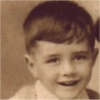 | Name: Kevin Jones
Overview: Kevin Jones` father worked in a Welsh mine, then joined the Royal Navy and worked his way up from sick berth attendant to Lieutenant Commander. Kevin went to various grammar schools in Navy ports and left at 18 to train as an accountant. He worked for several large companies, unhindered by his diabetes, but has had more problems in recent years. In 2002 his leg was amputated, but he had great help from the Limb Centre and now walks and drives with an artificial limb. He loves jazz, and is pictured with a statuette of a jazz musician.
Hits=1 |
|
|
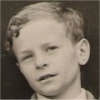 | Name: Philip
Overview: Philip was diagnosed aged 9 and considers that it`s better to get diabetes young, when the body is more adaptable. He attended a grammar school, and regrets that he often used diabetes as an excuse to miss school. He left at 16, but acquired more qualifications later and became a successful accountant. His diabetes was well controlled and caused little trouble for most of his life, until he began to get early morning hypos a few years ago. (He finds the term `hypo` unhelpful, since it`s used to refer to anything from a mild sensation to complete unconsciousness.)
Hits=1 |
|
|  | Name: Clive B
Overview: Clive`s wife, Joan, was diagnosed with diabetes when she was four years old, in 1945. They married when she was nearly 21 in 1962 and had one son. Clive knew little about diabetes when they married but felt it was essential to learn, because when Joan had a hypo, she needed his help to recover. He has always been on the look-out for warning signs and has also supported her through miscarriages and depression. He thinks that coping with diabetes has strengthened their marriage. Had he known what he was taking on, `I`d still do the same thing again tomorrow`.
There is also an interview with Clive`s wife, Joan B.
Hits=1 |
|
|
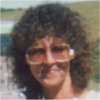 | Name: Mary Potter
Overview: Mary Potter`s daughter, Joanne, developed symptoms of diabetes in 1978, when she was five. Her GP refused to believe she had diabetes and Joanne nearly died. This traumatic beginning left a legacy of anxiety and anger. Mary noticed that another mother of a diabetic child was more laid-back than she was. She also noticed that when a niece was diagnosed around ten years later, there was much more specialist help and information available. Mary still sometimes accompanies Joanne to diabetic clinics. Joanne hates clinic visits because she feels that doctors treat her like a child and make her feel guilty.
There are also interviews with Mary Potter`s daughter, Joanne Pinfield, and with Joanne`s husband, Nick Pinfield.
Hits=1 |
|
|  | Name: Colin Gates
Overview: Colin Gates` father and 6 uncles were all butchers and Colin did a meat apprenticeship between leaving school and doing National Service. He worked as a butcher for 17 years then moved into security work; it was during a company health check that his diabetes was discovered. He later became an operating theatre orderly and won an award for his work before a stroke led to early retirement. He regards a subsequent quadruple heart bypass as `the best thing I have ever had done` and refuses to allow other health problems to stop his enjoyment of life.
Hits=1 |
|
|
 | Name: Jenny Shaw
Overview: Jenny Shaw began specialising in diabetes when she worked as a staff nurse at the Radcliffe Hospital in Oxford from 1986 to 1988. She has worked in Oxford ever since, first as a diabetes specialist nurse from 1988 to 1998, then as a research nurse for the past ten years. In recent years, she has been involved in studies concerning the development of new treatments for people with type 2 diabetes. She is interested in the diversity of patients` experiences: `it`s a challenge how to meet that with each patient, and adapt…to that individual, and listen to what they`re saying`.
Hits=1 |
|
|
| Search returned 84 matches |